Cartier’s contemporary Australian presence unveiled
The French jewellery maison’s vast George Street boutique heralds its arrival on the nation’s flourishing luxury scene.

The storied French jeweller may have been in Australia since the 1970s, but with the opening of its 794sq m store on George Street in Sydney it has properly heralded its arrival on the nation’s flourishing luxury scene. The new boutique is a result of three years of working with architects and artisans from Paris to the Crocodile Islands in the Northern Territory.
“The flagship is a master piece of a bigger roadmap in Australia for Cartier. It is to really establish the maison here at the right level,” says Alban du Mesnil, the managing director of Cartier Australia and New Zealand. “We have been through a significant investment in the past year because we feel we have a very strong connection to this country and we could go further in terms of presence.
“Part of this is having a very strong boutique not only for Sydney but for the whole Australian region, and to showcase what Cartier stands for, reflect our new ambition and to create a space that is radically different from what we had before.”
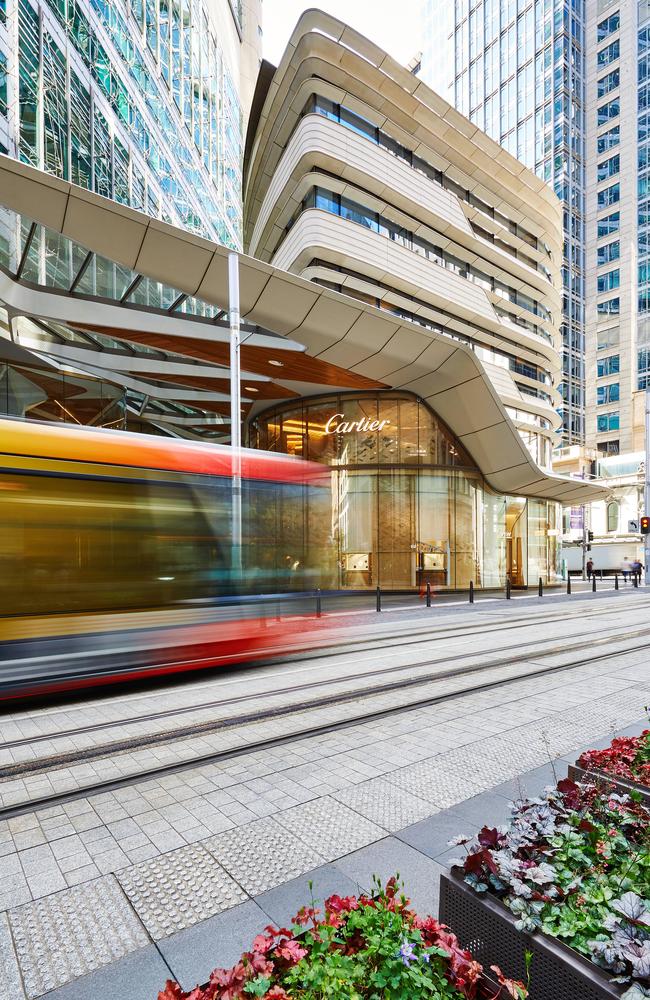
Radically different begins with throwing out the old rulebook of what makes a Cartier boutique. Similar to other international luxury brands such as Dior, Gucci and Chanel, there was a tendency in the past to make all stores look and feel similar regardless of location. It didn’t matter whether you were in Paris or London or Tokyo, a Cartier experience would be the same everywhere. This has changed.
“The trend in luxury now is really about localisation and personalisation, and so it’s essential that each boutique has its own singularity and it’s relevant to the environment,” explains du Mesnil. “So it means a Cartier boutique in Sydney cannot be the same as the Cartier boutique in Dubai or New York because these three cities have different dynamics and different identities. So somehow this new boutique has to embrace this local reality while still being very faithful to the Cartier DNA.”
-
Explore the Watch and Jewellery special edition of WISH, available online and in print on Friday, 18 November.
-
Marrying the geography, culture and lifestyle of Sydney with the French watch and jewellery house started by Louis-Francois Cartier in 1847 on the other side of the world was no easy task. It began with a brainstorming session between du Mesnil and his local team and the interior architects and designers in Paris who threw up ideas about colour, landscape, and who we are as people and history.
“The first things that came up about Australia was exploration, inclusion, open-mindedness, all these big spaces, and also the beauty of nature,” du Mesnil says. “And then Indigenous art, First Nations art, which is very powerful. We felt it was key in connecting to Australia to embrace this aspect. When I first came here five years ago I was blown away by the importance of Indigenous culture.”
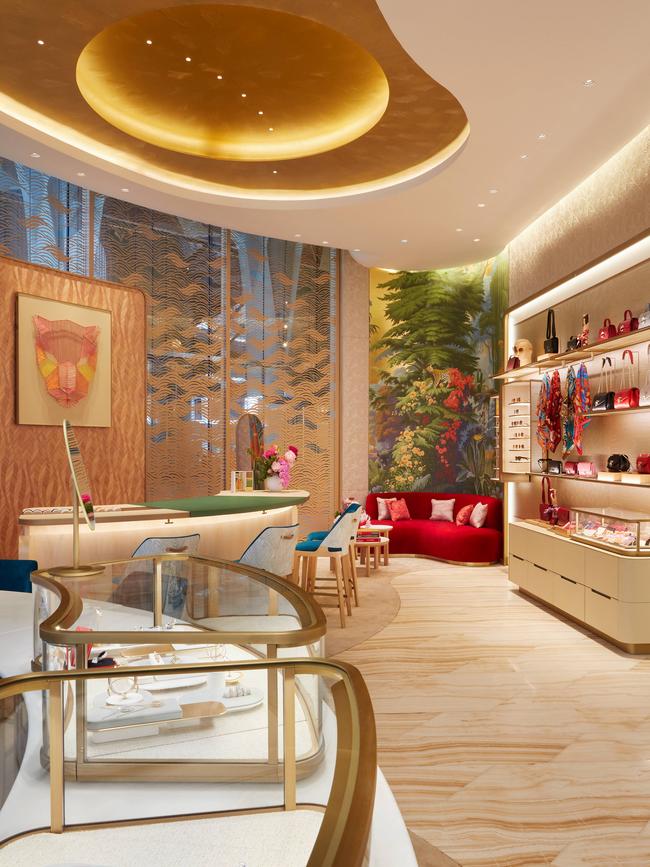

Du Mesnil is talking to WISH on a sunny Wednesday morning – one of the clear days after what seemed like endless rain in Sydney – in his new office overlooking King Street. It is part of Cartier’s new Australian headquarters, and matches the boutique in terms of design, ambition and expansion. One of the first things he shows me is a piece by Indigenous furniture company Manapan sitting on a bureau behind his desk.
“What do you think this is?” asks du Mesnil, pointing to the stunning timber work, which features long cutouts. “It’s a lamp. Isn’t incredible?”
The piece is made from Darwin stringybark wood to replicate the skin of a crocodile and was created in conjunction with Melbourne-based designer Suzie Stanford. Manapan is based on Milingimbi Island, the largest of the Crocodile Islands off East Arnhem Land in the NT. It is run by the Yolngu people, whose ancestors have inhabited the area for more than 65,000 years, and works with top designers around the country to merge modern design with traditional thoughts and beliefs from Arnhem Land.
“We have worked with Manapan to design some unique tailor-made furniture for this boutique,” du Mesnil explains. The Indigenous-owned company also produced a meeting table in the Cartier office and Mesnil is keen to show me (“It’s just stunning”) but his numerous attempts are thwarted by the fact that it’s a very busy meeting room full of people and papers. Even from afar, through glass, under paperwork and coffee cups, the beauty of the table is still apparent. Manapan craftsman Josiah Baker says each piece they create has its own meaning.
“It [the work] tells stories about time back then and now and how everything is changing,” he explains. “We do carvings that represent different places, the beginning of time, the end of time, nature itself.”
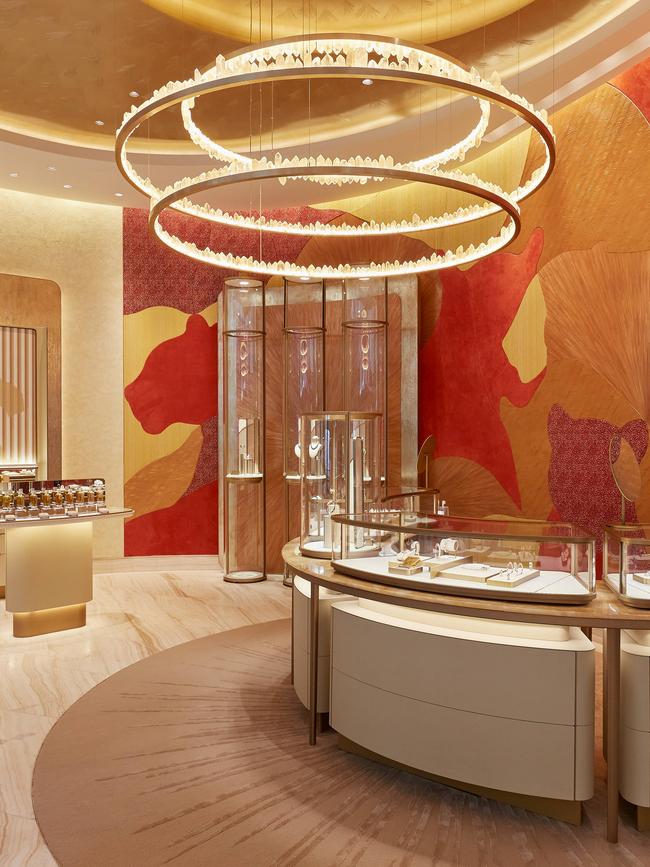
Cartier also engaged artists from nearby Ramingining, about 400km east of Darwin, through Bula’bula Arts, to create a weaving for the boutique. Made out of pandanus leaves, the weavings are dyed with natural colours from the surrounding landscape and the technique has been practised for generations to create art, bags and jewellery. One of the Indigenous craftswomen involved in the project is Daphne Banyawarra, who learnt the technique from her grandmother and mother and says weaving is a way of expressing their history, culture and connection to the land.
“I’m really proud of [the weaving],” she says of the piece, which also had to have a special frame crafted. “It brings our story together, keeps our culture, given by ancestors, and it’s a strong way of sharing what we are doing. Not just at Bula’bula Arts but also helping the community.”
The weaving from Bula’bula Arts is part of the “masculine universe” of the Sydney boutique, which is inspired by the ochre-orange colours of the Australian desert. It is one of five defined spaces on the ground floor, which have different colour palettes, furniture and art, all designed in conjunction with Paris-based interior architects Moinard Betaille.
From the entrance on George Street you walk straight into the first “feminine universe”, which is inspired by Australian sandstone and has sand and gold tones in the floors, fabric wall coverings featuring shapes of shells and onyx stone table tops. There is a welcoming bar and gift-wrapping space that features hand-painted wallpaper from De Gournay evoking the rich colours of Australian flora and fauna. The brilliant reds of the eucalyptus flowers and waratahs also match perfectly with the famous Cartier red. The store’s stunning stairwell has a wall patina that echoes sunsets on Sydney Harbour and a chandelier made by local light design firm Christopher Boots from quartz crystal and bronze. “We wanted to create some connections to Australia and have different spaces or universes in the boutiques, and give each of them a different identity,” du Mesnil explains.
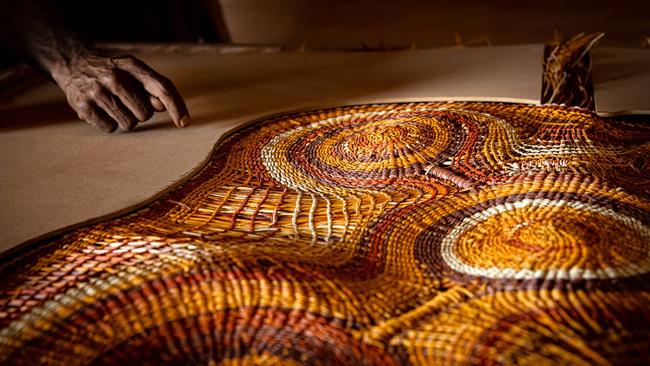
“So we took some inspiration from rainforests in one room, some architecture in one room, the landscape in another. The intention really was to create an experience of Australia in this Cartier boutique.”
That journey through this country of course starts with the dramatic façade of the new building, which is covered in a champagne-coloured mesh inspired by light hitting the water of Sydney’s Harbour and the oceans.
“Here it is all about immensity, light, colours, the ocean and sun,” says du Mesnil. “So we wanted something very transparent that would let the light into the boutique. This façade will really put light in motion inside and when the lights move it will be filtered by this wave shape. It will really create a unique atmosphere, but it will also create some privacy from the street.”
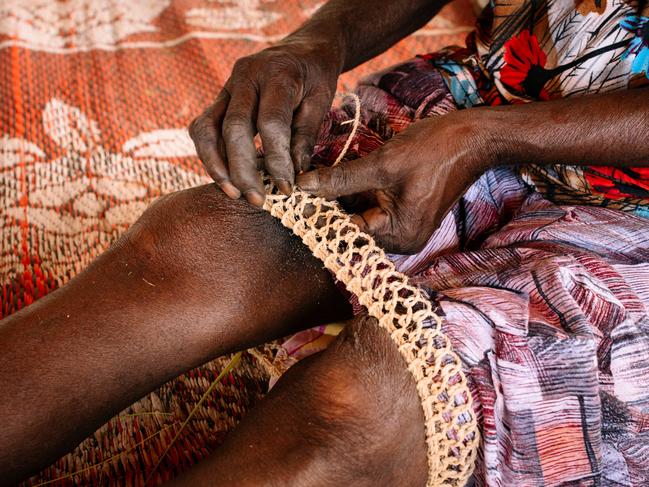
The first floor of the flagship houses an event space. The bar at the centre, in beautiful green and blue marble, was inspired by opals. There are VIP areas for clients, and also a lounge with a backdrop created by French lacquer artist Anne Midavaine that features Sydney’s main emblems, the Opera House and the Harbour Bridge, alongside one of Cartier’s most iconic ones – the panther.
“This space will be for client experiences. We will design some unique cocktails for the bar and it will host our jewellery events,” du Mesnil explains. The CEO says since the pandemic and lockdowns, offering experiences for clients beyond just purchasing a piece has become even more important. He also says the pandemic dramatically changed the client landscape in Sydney; Cartier was able to connect with customers who were stuck in the country and would have normally done their shopping overseas.
“We have seen an extraordinary acceleration of our local clients,” du Mesnil tells WISH. “We have also spent a lot of time reflecting on how to better adapt our experience, our boutique concept and our communication strategy to local Australians and it’s now bearing fruit, because the relationships we built during those two years are still continuing to this day.”
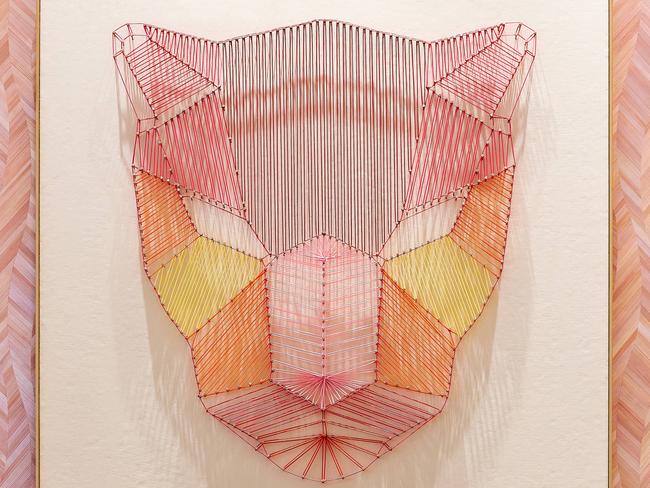
The French jewellery house has also upped the digital stakes, creating an e-commerce distribution centre in the basement and installing equipment to enable virtue appointments for clients who live in remote parts of Australia.
“It really is a new chapter for us,” du Mesnil says of the flagship, which opened on November 17, with a fabulous party marking the occasion the night before. “We have all this localisation, personalisation, experience and integration of all our digital and retail channels in one place.”
As for where the store is located, you couldn’t ask for a more appropriate spot than the corner of King and George streets, given Cartier’s history of royal clientele.
“Cartier of course is really the king of jewellers and the jeweller of kings, so it perfectly reflects the leading position of the maison,” du Mesnil smiles. “We also consider it the busiest and most relevant place for luxury in Australia.”


To join the conversation, please log in. Don't have an account? Register
Join the conversation, you are commenting as Logout